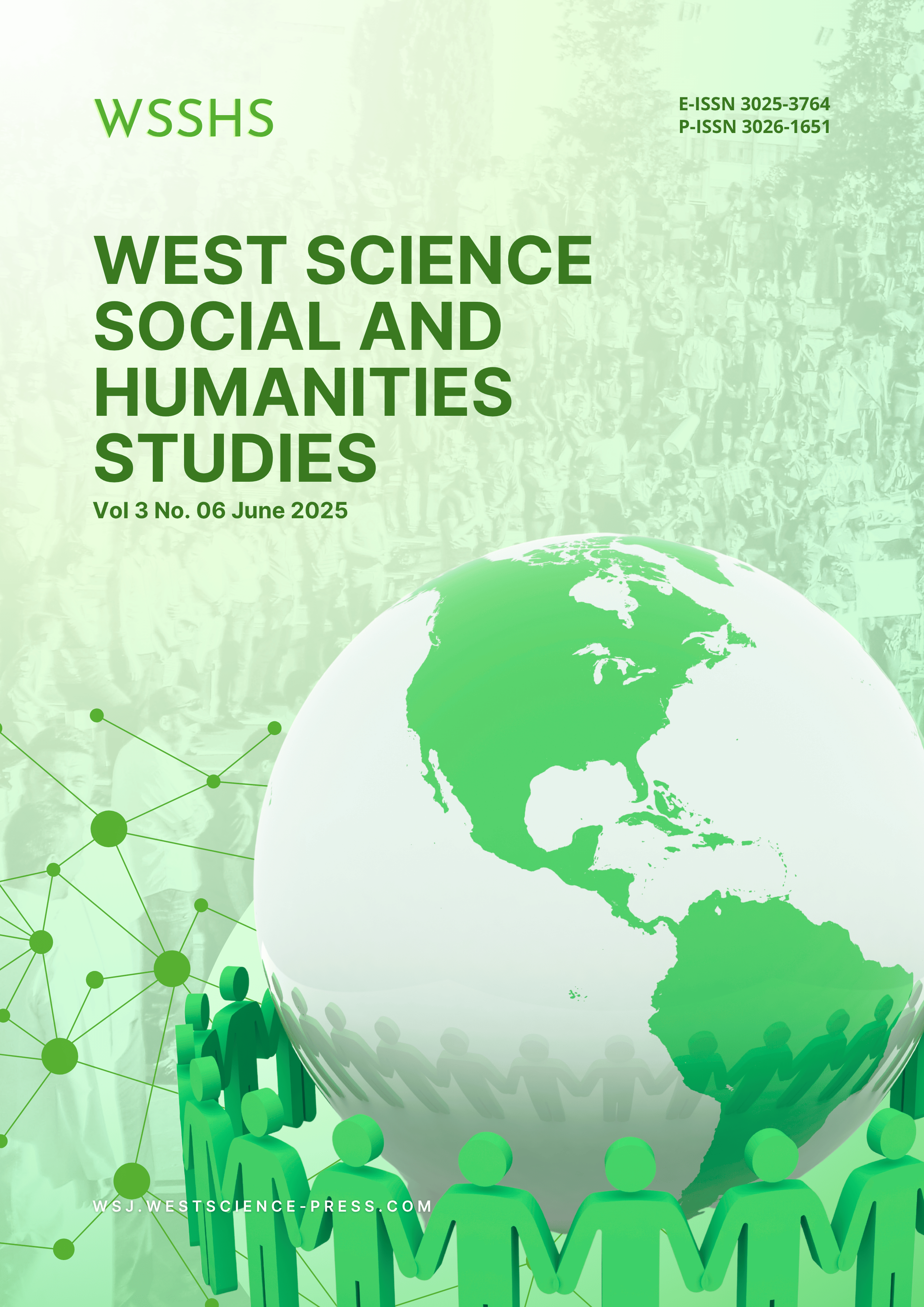Human Capital Development in Developing Countries: A Comparative Bibliometric Analysis
DOI:
https://doi.org/10.58812/wsshs.v3i06.2007Keywords:
Human Capital Development, Developing Countries, Bibliometric Analysis, Scopus, VOSviewerAbstract
This study presents a bibliometric analysis of research on human capital development in developing countries, utilizing data from the Scopus database and visualization tools from VOSviewer. By examining 1,842 scholarly publications from 2000 to 2024, the analysis identifies key themes, influential authors, collaboration patterns, and temporal trends in the literature. The findings highlight that “human capital” is closely interlinked with core concepts such as “economic development,” “education,” and “sustainable development,” reflecting its central role in the discourse on inclusive growth. Over time, research has expanded to encompass newer topics like “innovation,” “climate change,” and “foreign direct investment,” indicating a shift toward integrative and forward-looking frameworks. Co-authorship and country collaboration maps reveal a dominant role of developed nations, particularly the United States, but also an encouraging rise in contributions from emerging economies in Africa and Asia. While the literature is increasingly diversified and collaborative, gaps remain in gendered analysis, informal labor perspectives, and South–South knowledge production. This study underscores the need for more inclusive, interdisciplinary, and context-sensitive approaches to advance the human capital agenda in developing countries.
References
[1] H. C. Terzioglu and A. Atalar, “The Impact of Human Capital on Environmental Awareness in Developed Countries,” in ESG and Ecosystem Services for Sustainability, IGI Global, 2024, pp. 383–404.
[2] Y. Bai, “A Study of the Impact of Human Capital Investment on Organizational Performance,” Highlights Business, Econ. Manag., vol. 32, pp. 210–216, 2024.
[3] A. Seghers, S. Manigart, and T. Vanacker, “The impact of human and social capital on entrepreneurs’ knowledge of finance alternatives,” J. Small Bus. Manag., vol. 50, no. 1, pp. 63–86, 2012.
[4] M. Chen, R. W. Angus, H. N. Herrick, and J. B. Barney, “Accessing human capital resources for entrepreneurial endeavors through social networks: The implications of strong tie superiority, social media, and heterogeneous human capital,” Strateg. Entrep. J., vol. 17, no. 3, pp. 535–559, 2023.
[5] R. Passaro, I. Quinto, and A. Thomas, “The impact of higher education on entrepreneurial intention and human capital,” J. Intellect. Cap., vol. 19, no. 1, pp. 135–156, 2018.
[6] N. Donthu, S. Kumar, D. Mukherjee, N. Pandey, and W. M. Lim, “How to conduct a bibliometric analysis: An overview and guidelines,” J. Bus. Res., vol. 133, pp. 285–296, 2021.
[7] J. S. Coleman, “Social capital in the creation of human capital,” Am. J. Sociol., vol. 94, pp. S95–S120, 1988.
[8] E. G. Popkova and B. S. Sergi, “Human capital and AI in industry 4.0. Convergence and divergence in social entrepreneurship in Russia,” J. Intellect. Cap., vol. 21, no. 4, pp. 565–581, 2020.
[9] C. D. Mathers and D. Loncar, “Projections of global mortality and burden of disease from 2002 to 2030,” PLoS Med., vol. 3, no. 11, p. e442, 2006.
[10] E. L. Glaeser, R. La Porta, F. Lopez-de-Silanes, and A. Shleifer, “Do institutions cause growth?,” J. Econ. Growth, vol. 9, pp. 271–303, 2004.
[11] C. A. Hidalgo, B. Klinger, A.-L. Barabási, and R. Hausmann, “The product space conditions the development of nations,” Science (80-. )., vol. 317, no. 5837, pp. 482–487, 2007.
[12] T. Stock and G. Seliger, “Opportunities of sustainable manufacturing in industry 4.0,” procedia CIRP, vol. 40, pp. 536–541, 2016.
[13] J. E. Lawn et al., “Every Newborn: progress, priorities, and potential beyond survival,” Lancet, vol. 384, no. 9938, pp. 189–205, 2014.
[14] J. Pretty, “Agricultural sustainability: concepts, principles and evidence,” Philos. Trans. R. Soc. B Biol. Sci., vol. 363, no. 1491, pp. 447–465, 2008.
[15] T. Gylfason, “Natural resources, education, and economic development,” Eur. Econ. Rev., vol. 45, no. 4–6, pp. 847–859, 2001.
[16] E. Schofer and J. W. Meyer, “The worldwide expansion of higher education in the twentieth century,” Am. Sociol. Rev., vol. 70, no. 6, pp. 898–920, 2005.
[17] R. L. Bailey, K. P. West Jr, and R. E. Black, “The epidemiology of global micronutrient deficiencies,” Ann. Nutr. Metab., vol. 66, no. Suppl. 2, pp. 22–33, 2015.
[18] K. C. Samir and W. Lutz, “The human core of the shared socioeconomic pathways: Population scenarios by age, sex and level of education for all countries to 2100,” Glob. Environ. Chang., vol. 42, pp. 181–192, 2017.
Downloads
Published
Issue
Section
License
Copyright (c) 2025 Loso Judijanto, Ghoriqna Fibahril Wahdah, Ely Ibrahim, Syamsinah Syamsinah, Rizal Rizal

This work is licensed under a Creative Commons Attribution-ShareAlike 4.0 International License.




















 Instagram
Instagram 